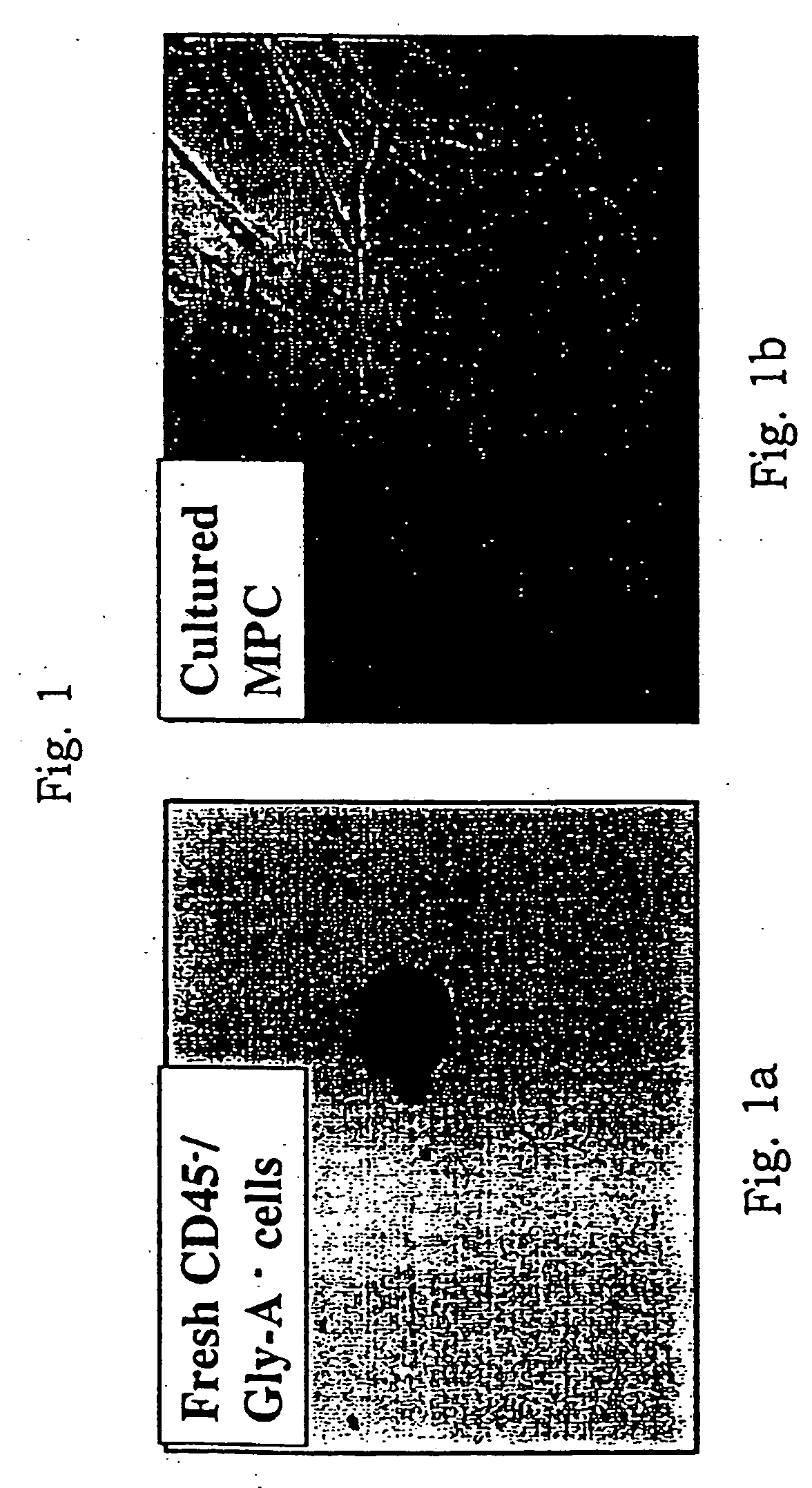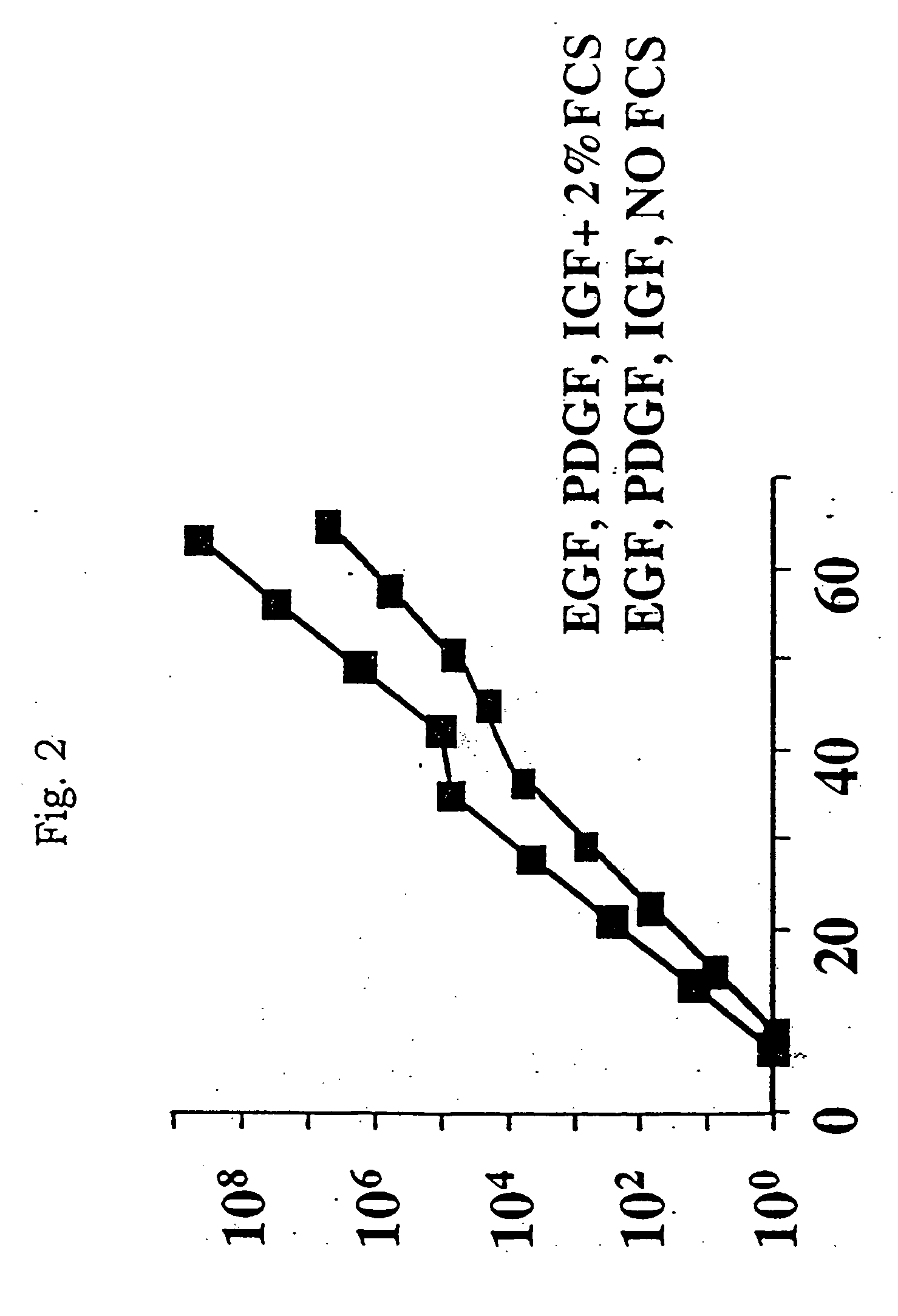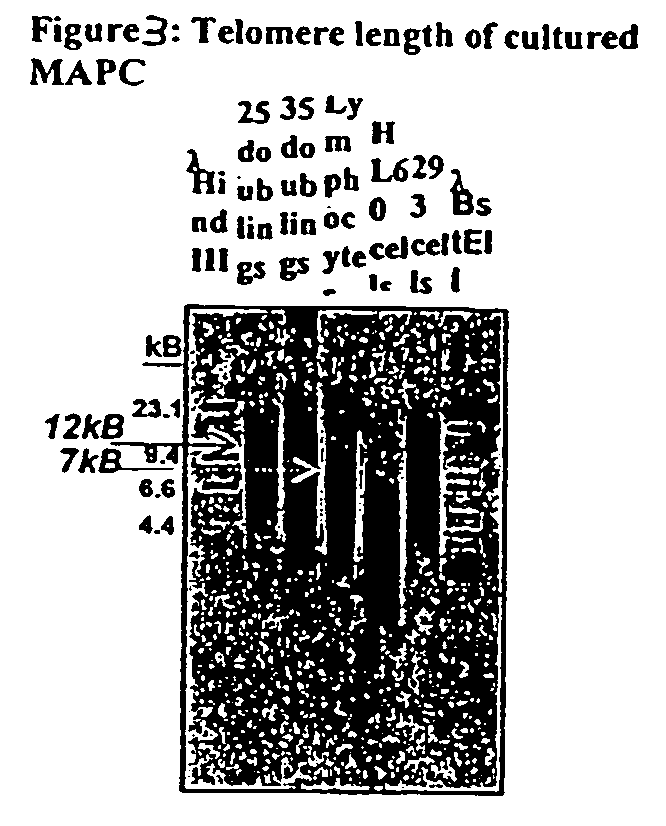Multipotent adult stem cells and methods for isolation
a stem cell and multi-potent technology, applied in the field of stem cell and cell isolation methods, can solve the problems of inability to provide anti-rejection medications to patients at a significant cost, inability to meet the immune system of the recipient, and inability to meet the needs of the patient's immune system, and achieve the effect of high levels of telomeras
- Summary
- Abstract
- Description
- Claims
- Application Information
AI Technical Summary
Benefits of technology
Problems solved by technology
Method used
Image
Examples
example 1
Isolation of MASCs from Bone Marrow Mononuclear Cells
[0215] Bone marrow mononuclear cells were obtained from bone marrow aspirates from the posterior iliac crest of >80 healthy human volunteers. Ten to 100 cubic centimeters of bone marrow was obtained from each subject, as shown in Table 2, which indicates the approximate number of mononuclear cells isolated from each subject. Mononuclear cells (MNC) were obtained from bone marrow by centrifugation over a Ficoll-Paque density gradient (Sigma Chemical Cp. St. Louis, Mo.). Bone marrow MNC were incubated with CD45 and Glycophorin A microbeads (Miltenyi Biotec, Sunnyvale, Calif.) for 15 minutes and CD45+ / Gly-A+ cells removed by placing the sample in front of a SuperMACS magnet. The eluted cells are 99.5% CD45− / GlyA−.
[0216] As shown in Table 2, depletion of CD45+GlyA+ cells resulted in recovery of CD45−GlyA− cells which constituted approximately 0.05 to 0.10% of the total bone marrow mononuclear cells.
TABLE 2Number ofNumber of MASCsV...
example 2
Differentiation of MASCs
[0222] To induce osteoblast differentiation, serum-free medium was supplemented with 10−7 M of dexamethasone, 10 mM ascorbic acid, and 10 mM -glycerophosphate. Osteoblast differentiation was confirmed by detection of calcium mineralization, alkaline phosphatase expression, and production of bone sialoprotein, osteopontin, osteocalcin and osteonectin, which are relatively specific for bone development (see FIG. 7).
[0223] To induce differentiation into cartilage, serum-free medium, as previously described, was supplemented with 100 ng / ml TGF-1 (R&D Systems, Minneapolis, Minn.). Cells were induced to differentiate while adherent to fibronectin, or in suspension culture, with both methods producing differentiated cartilage cells. Differentiation to form cartilage cells was confirmed by detection of collagen type II, as well as the glycosaminoglycan aggrecan (see FIG. 7).
[0224] To induce adipocyte differentiation, 10−7 M dexamethasone and 100 μg / ml insulin were...
example 4
Transduction of MASCs from Adult Marrow
[0232] Once MASC cultures have been established after about 3-10 subcultures, MASCs were retrovirally transduced with an enhanced green fluorescence protein (eGFP) containing vector on two consecutive days. Retroviral vectors that were used were the MFG-eGFP or MND-eGFP-SN constructs, kindly provided by Donald Kohn, M.D., LA Childrens Hospital, Los Angeles, Calif. Both vectors were packaged in the amphotropic cell line PA317 or the Gibon-ape leukemia packaging cell line PG13. Retroviral supernatant was produced by incubating the producer feeder with MASCs expansion medium for 48 hours. Supernatant was filtered and frozen at −80° C. until use. Semiconfluent MASCs were subcultured in MASCs expansion culture medium. After 24 hours media was replaced with retrovirus containing supernatants and 8 g / mL protamine (Sigma) for 5 hours. This was repeated 24 hours later. Two to three days after the last transduction, eGFP+ cells were selected on a FACS S...
PUM
| Property | Measurement | Unit |
|---|---|---|
| concentration | aaaaa | aaaaa |
| concentration | aaaaa | aaaaa |
| concentration | aaaaa | aaaaa |
Abstract
Description
Claims
Application Information
 Login to View More
Login to View More - R&D
- Intellectual Property
- Life Sciences
- Materials
- Tech Scout
- Unparalleled Data Quality
- Higher Quality Content
- 60% Fewer Hallucinations
Browse by: Latest US Patents, China's latest patents, Technical Efficacy Thesaurus, Application Domain, Technology Topic, Popular Technical Reports.
© 2025 PatSnap. All rights reserved.Legal|Privacy policy|Modern Slavery Act Transparency Statement|Sitemap|About US| Contact US: help@patsnap.com



